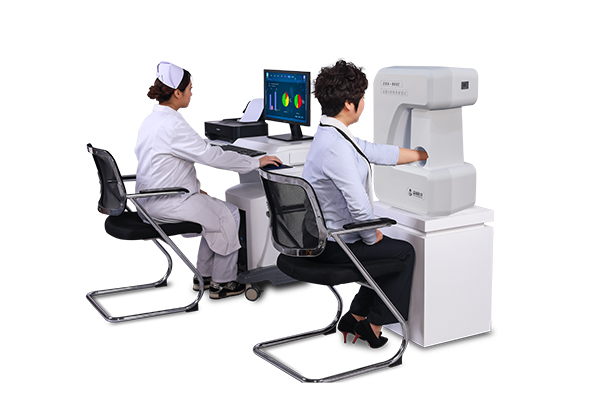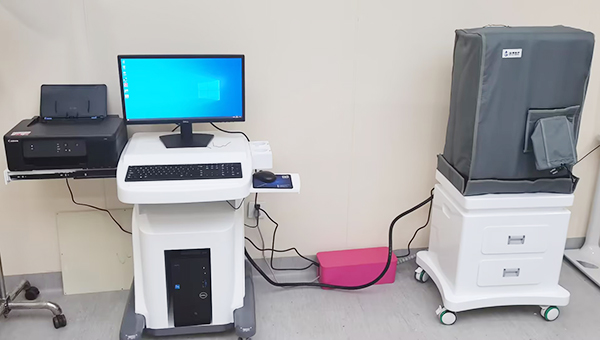Principle and application of dual-energy X-ray bone densitometer
With the acceleration of the aging of society, osteoporosis is a common chronic disease of the elderly, and its prevention and treatment has been paid more and more attention. Dual-energy X-ray bone densitometer uses two different energy X-rays to scan bones, and calculates bone density by analyzing the degree of bone absorption of X-rays, which provides a reliable basis for the early diagnosis and treatment of osteoporosis. This method can not only accurately measure bone mineral content, but also distinguish between types of bone tissue, such as cancellous bone and dense bone, so as to comprehensively assess bone health.
In clinical applications, DEXA is primarily used to assess osteoporosis risk and monitor treatment outcomes. For middle-aged and elderly people, especially postmenopausal women and elderly men, DEXA examination can help early detection of osteoporosis and timely intervention to reduce the risk of fracture. In addition, for patients with osteoporosis who have already been diagnosed, DEXA can be used to track disease progression and evaluate treatment effects, so as to adjust treatment regimens and improve efficacy.
Status of osteoporosis
Osteoporosis is a systemic bone disease characterized by loss of bone mass and destruction of bone microstructure, which increases the risk of fracture. According to statistics, about one in three women and one in five men will be affected by osteoporosis in their lifetime. This disease is not only more common in the elderly population, but also shows a trend of younger people that cannot be ignored.
In recent years, the incidence of osteoporosis in young people under 40 years old is on the rise, which is closely related to poor living habits, diet structure, lack of exercise and other factors. Osteoporosis in young people is often not detected, therefore, universal bone density detection, especially screening for high-risk groups, is of great significance for the prevention and timely treatment of osteoporosis.
Prevention and timely treatment of osteoporosis
The key to the prevention and treatment of osteoporosis is to improve bone density, thereby reducing the risk of fracture. Lifestyle adjustments, such as moderate exercise, balanced diet, smoking cessation and alcohol restriction, are the basis for preventing osteoporosis.
Prompt treatment is also important. Once osteoporosis is diagnosed, the doctor will develop a treatment plan based on the patient's specific situation, including medication, physical therapy and rehabilitation exercises. Regular detection of bone mineral density can help doctors to timely understand the progress of the patient's disease and treatment effects, so as to adjust the treatment strategy and improve the pertinence and effect of treatment.
The importance of regular bone mineral density testing
In the prevention and treatment of osteoporosis, regular measurement of bone mineral density has a very important role. Dual-energy X-ray densitometers provide accurate bone mineral density measurements to help physicians assess a patient's fracture risk. Based on the results of the bone density test, doctors can determine whether a patient needs further examination or treatment, as well as predict the patient's risk of future fractures.
Bone mineral density test results are also an important basis to guide treatment. The doctor will develop a personalized treatment plan based on the patient's bone density level, age, gender and other factors. Therefore, regular measurement of bone mineral density is important to assess fracture risk and guide treatment.
Detection and safety of dual-energy X-ray bone densitometer
The procedure of dual-energy X-ray bone densitometer is simple, quick and painless.The Pinyuan dual-energy X-ray bone densitometer scans the ulnar and radial bones of the patient. The whole procedure usually takes only 2 minutes and the patient does not have to undergo an injection or any other invasive procedure.
In terms of safety, the radiation dose of dual-energy X-ray bone densitometer is very low, much lower than that of conventional X-ray examination. This low-dose radiation does not cause long-term health damage to patients and is therefore considered a safe test. Still, special populations, such as pregnant and breastfeeding women, should consult a doctor before getting tested to ensure safety.
Because of its convenience and safety, dual-energy X-ray bone densitometry has become the preferred method for osteoporosis detection. Through regular testing, patients can know their bone health status in time, and doctors can provide more accurate treatment recommendations based on this, and jointly maintain bone health.
Post time: Oct-21-2024


